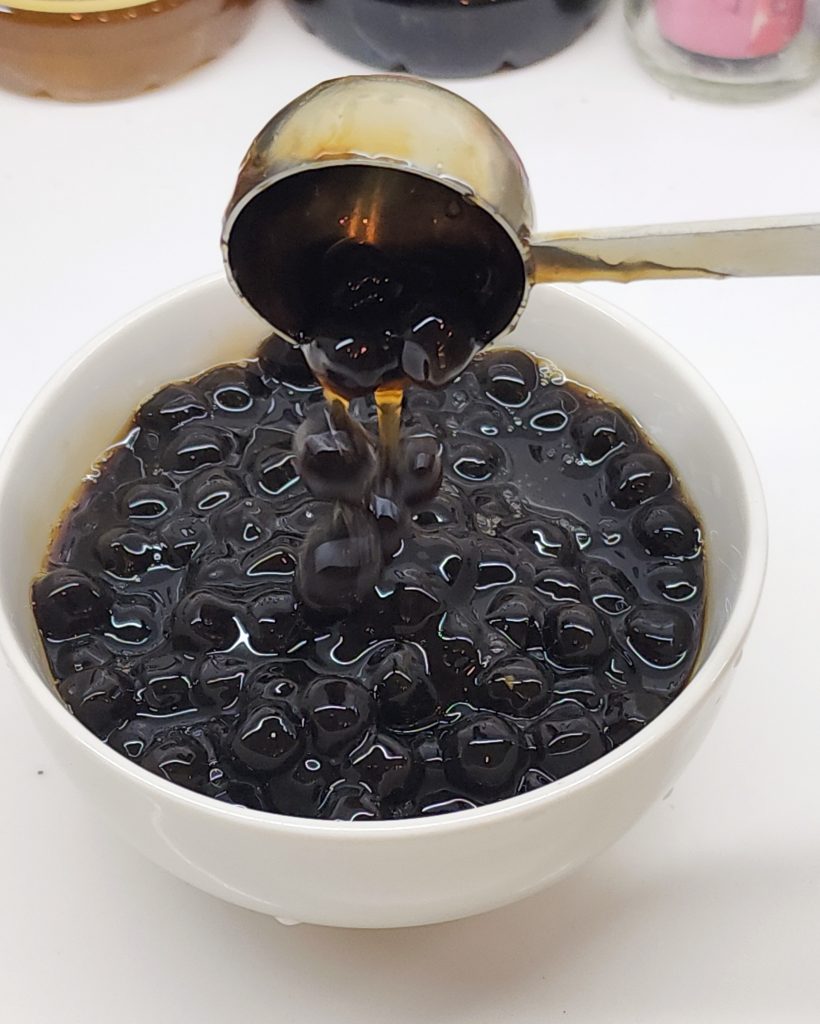At Karak, we’re all about understanding the ingredients that go into our dishes. Whether it’s the perfectly crispy exterior of our coffee buns or the fragrant spices in our curries, there’s a science to making everything just right.

Bubble tea, with its iconic tapioca pearls, is no exception. Have you ever wondered what gives these pearls their signature chewiness? Let’s dive into the science behind it.
The Origin of Tapioca Pearls
Tapioca pearls, or boba, are made from tapioca starch, which is derived from the cassava root. This starchy ingredient is key to the pearls’ unique texture. The process of turning tapioca starch into boba is both simple and fascinating.
The Science of Starch
Tapioca starch is primarily composed of carbohydrates, specifically amylose and amylopectin. These two starch molecules play a crucial role in the texture of the pearls.
When tapioca starch is mixed with boiling water, the heat causes the starch molecules to swell and gelatinize. This process traps water within the starch granules, giving the mixture its dough-like consistency.
Shaping and Cooking the Pearls
Once the dough is ready, it’s rolled into small balls to form the pearls. The next step is cooking, which is where the real magic happens.
As the pearls are boiled, the heat causes the starch molecules to break down and release some of the trapped water. This creates the soft, chewy texture that bubble tea lovers crave.
But the process doesn’t end there. To achieve the perfect consistency, the pearls need to be cooked just right—too long, and they become mushy; too short, and they remain too firm.
At Karak, we’ve perfected the timing to ensure our tapioca pearls hit that sweet spot every time.
The Role of Temperature and Time
Temperature and time are critical factors in determining the chewiness of tapioca pearls. Higher temperatures and longer cooking times can make the pearls softer, while lower temperatures and shorter times result in a firmer texture.
Once cooked, the pearls are often soaked in a sugar syrup, which not only sweetens them but also helps maintain their chewy texture by preventing them from hardening as they cool.
Why Chewiness Matters
The chewiness of tapioca pearls is what makes bubble tea so satisfying. It’s a texture that contrasts with the smoothness of the tea, creating a multi-sensory experience that’s both fun and flavorful.
For us at Karak, ensuring our pearls have the right amount of chewiness is just as important as getting the flavor of our teas right.
Experimenting with Textures

While traditional tapioca pearls are the most popular, the world of bubble tea is vast and full of possibilities. At Karak, we’ve been experimenting with different textures by adjusting cooking times, using flavored pearls, and even incorporating other ingredients like agar or konjac for a different kind of chew.
Conclusion
Understanding the science behind tapioca pearls has allowed us to perfect our bubble tea offerings at Karak. Whether you prefer your pearls on the softer side or with a bit more bite, knowing the role that starch, temperature, and time play in their texture can deepen your appreciation for this beloved drink.
Next time you take a sip of bubble tea, consider the intricate process that goes into making those delightful pearls. And if you’re ever curious to try something new, stop by Karak—we’re always cooking up something special.

Leave a Reply